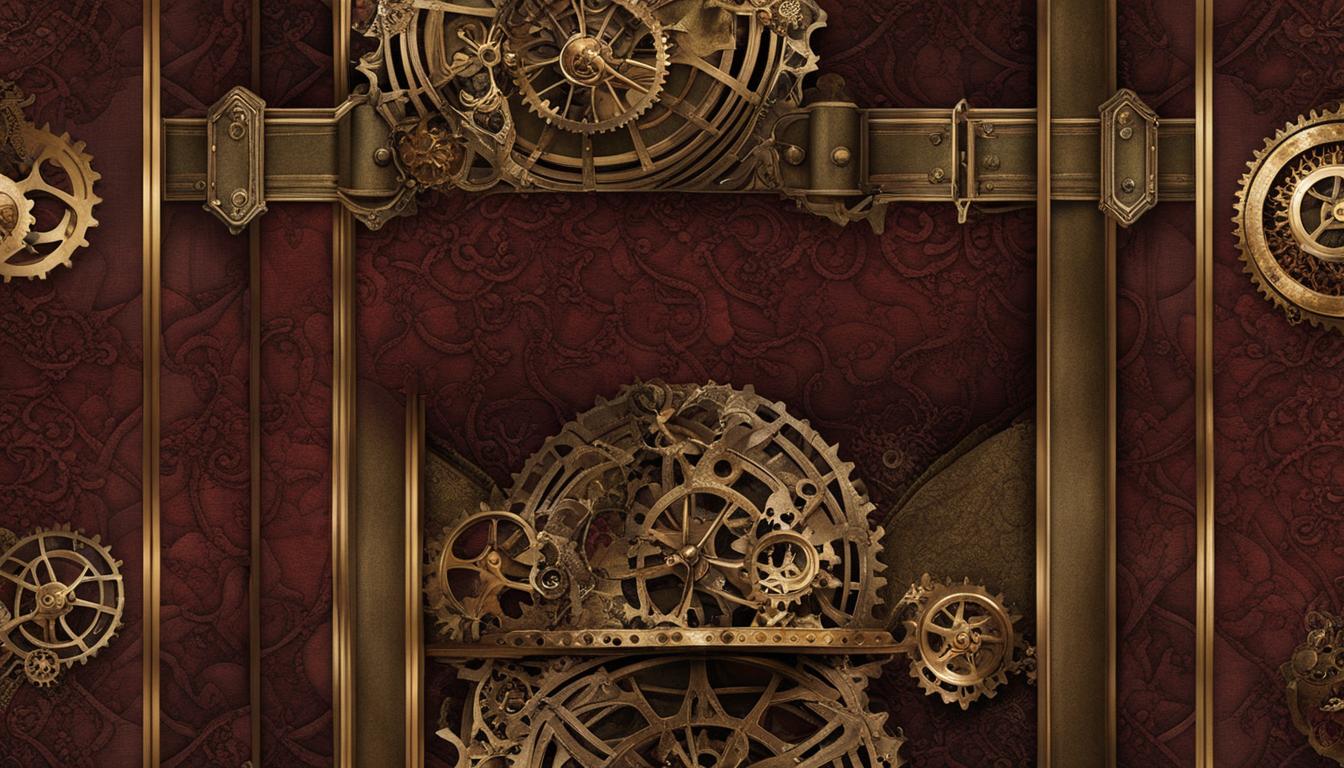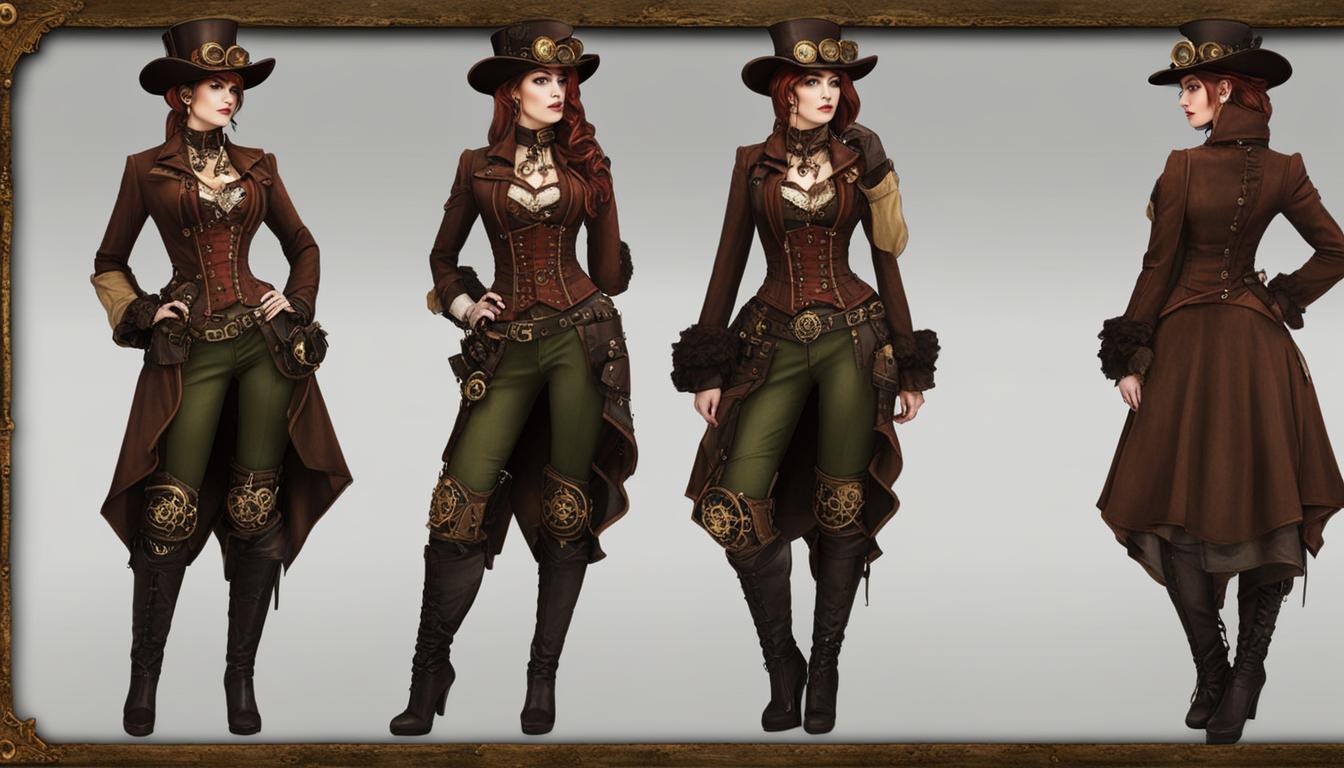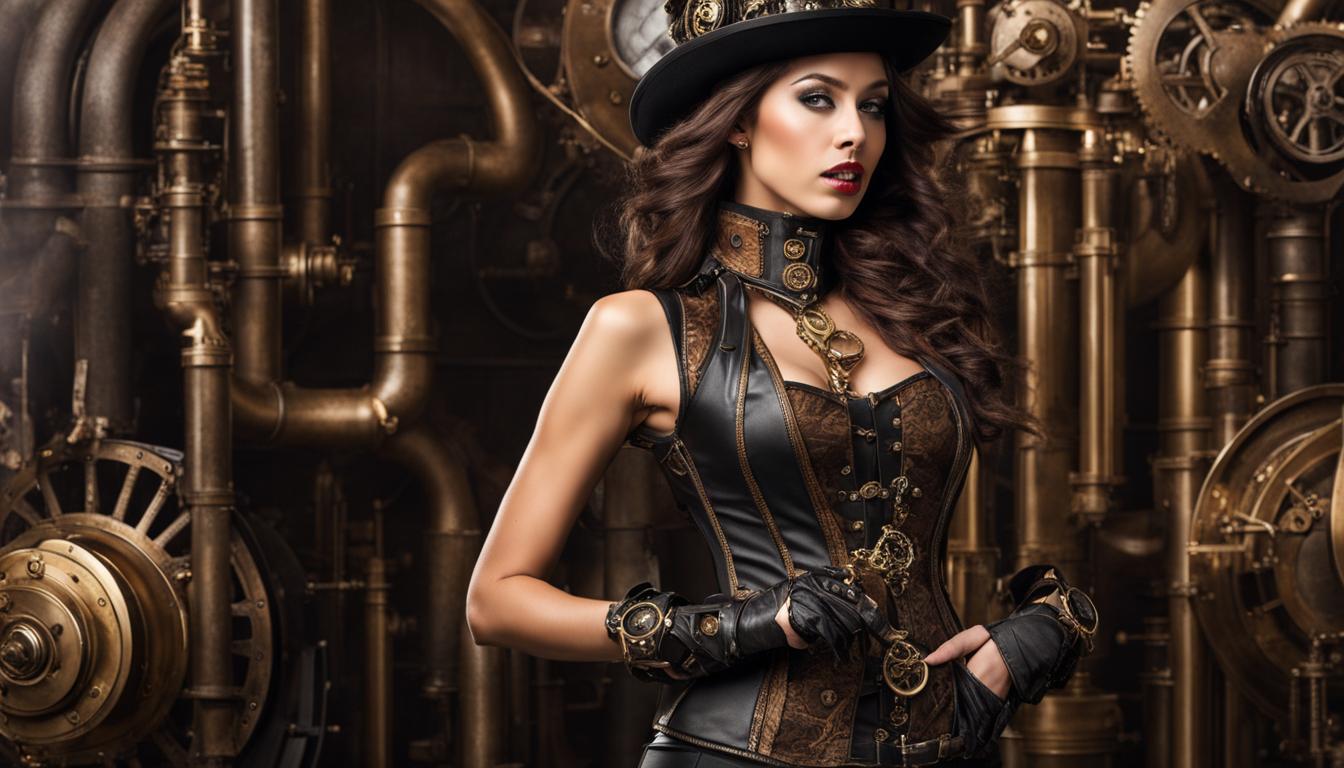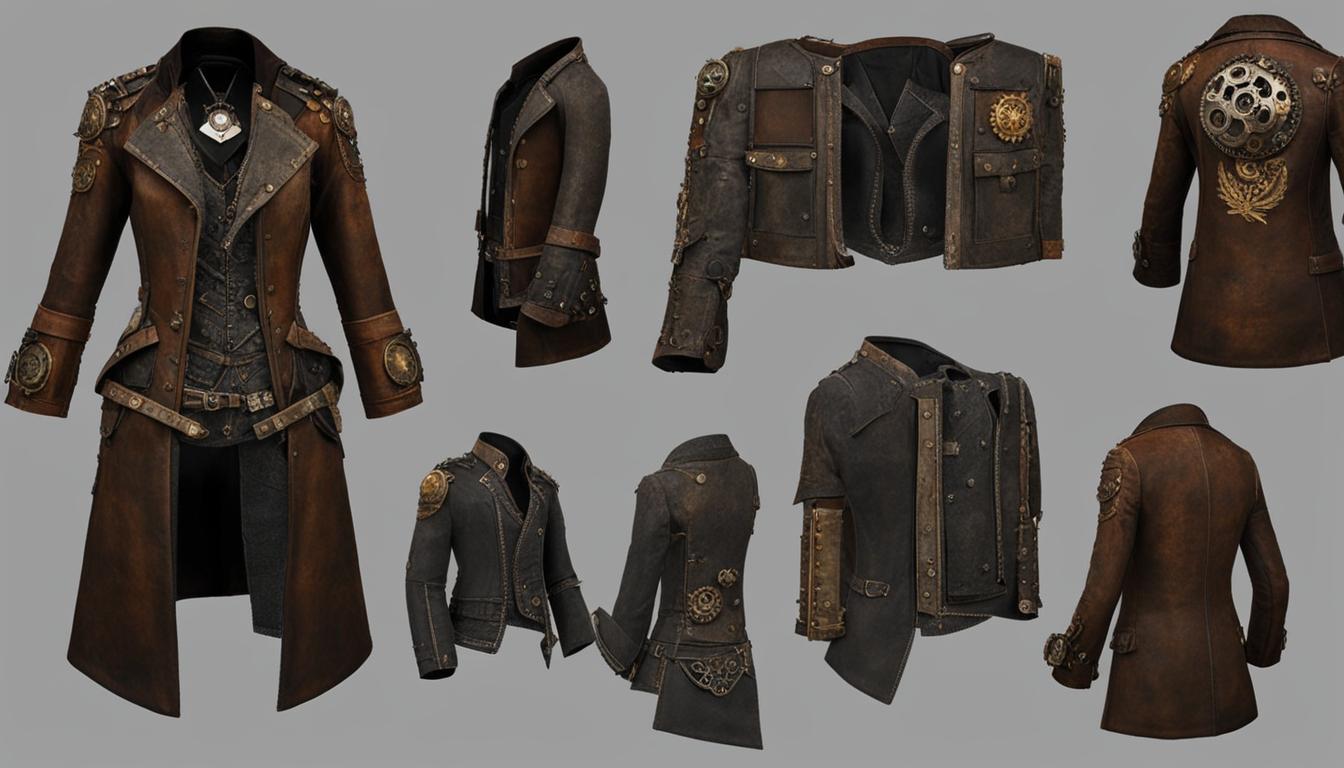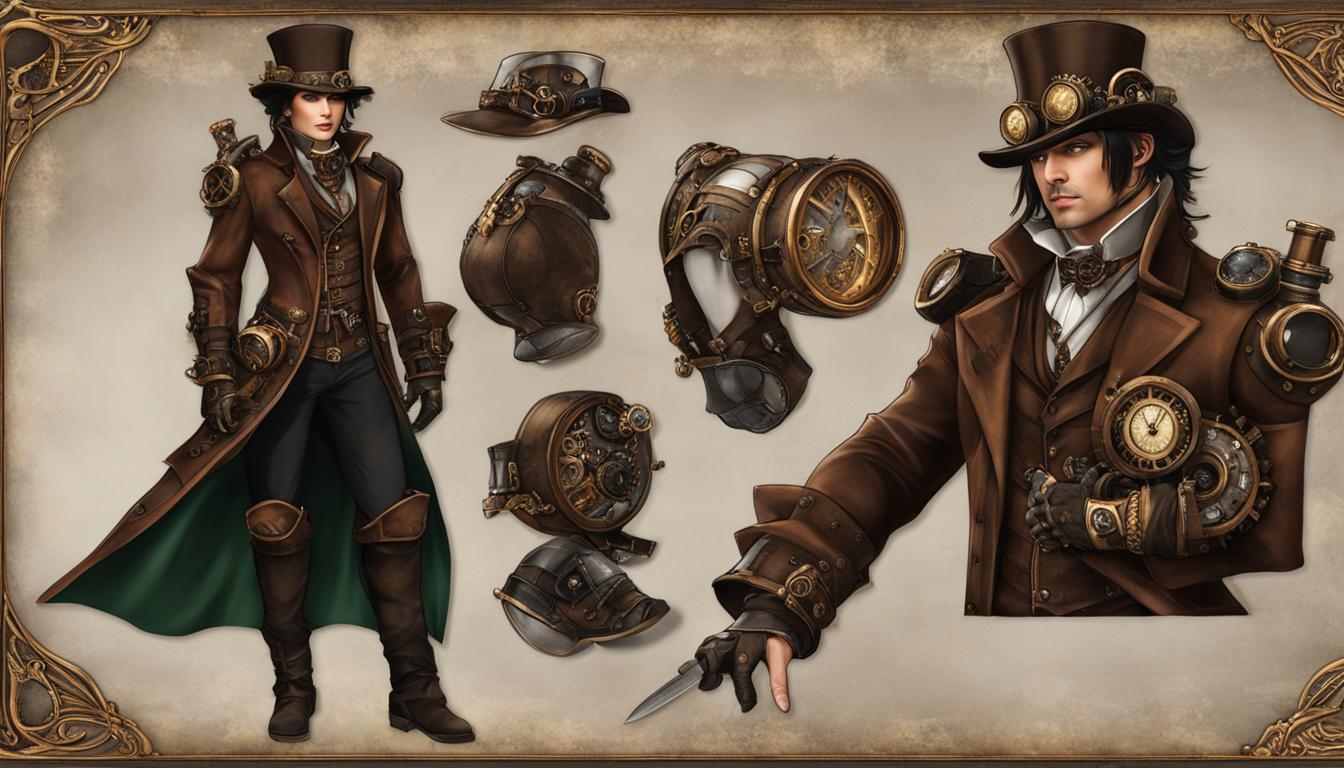Steampunk fashion is a world where creativity knows no bounds, where fabric choices become a canvas for daring adventures. In this realm of gears, cogs, and Victorian-inspired flourishes, silk, velvet, tulle, and leather reign supreme. Each fabric presents its unique challenges, but they are mere bumps on the path to Steampunk greatness.
Key Takeaways:
- Steampunk fashion embraces unique fabric choices, such as silk, velvet, tulle, and leather.
- Despite challenges like slipperiness and static cling, fabric manipulation techniques can overcome obstacles.
- Steampunk attire showcases diverse designs and textures, including clockwork motifs, brocade, lace, and distressed leather.
- Sewing and crafting with steampunk fabrics require careful consideration of weight, drape, and durability.
- When selecting fabrics for steampunk outfits, think about the desired silhouette, theme, and level of comfort.
Steampunk Fabric Designs and Textures
The world of steampunk fashion is a treasure trove of unique fabric designs and textures that add depth and character to every outfit. From gears and cogs to clockwork motifs, steampunk attire incorporates a wide range of patterns that capture the essence of the genre. Victorian-inspired florals, brocade, and lace also play a prominent role in creating an intricate and visually captivating steampunk look.
But it’s not just about the patterns; textures are equally important in bringing a steampunk outfit to life. Distressed leather evokes a sense of ruggedness and adventure, while ruffled fabric and pleats add an element of whimsy. Corsets, a staple in steampunk fashion, provide both structure and visual interest with their intricate boning and lacing. It’s the combination of different fabric designs and textures that allows steampunk enthusiasts to unleash their creativity and craft truly unique ensembles.
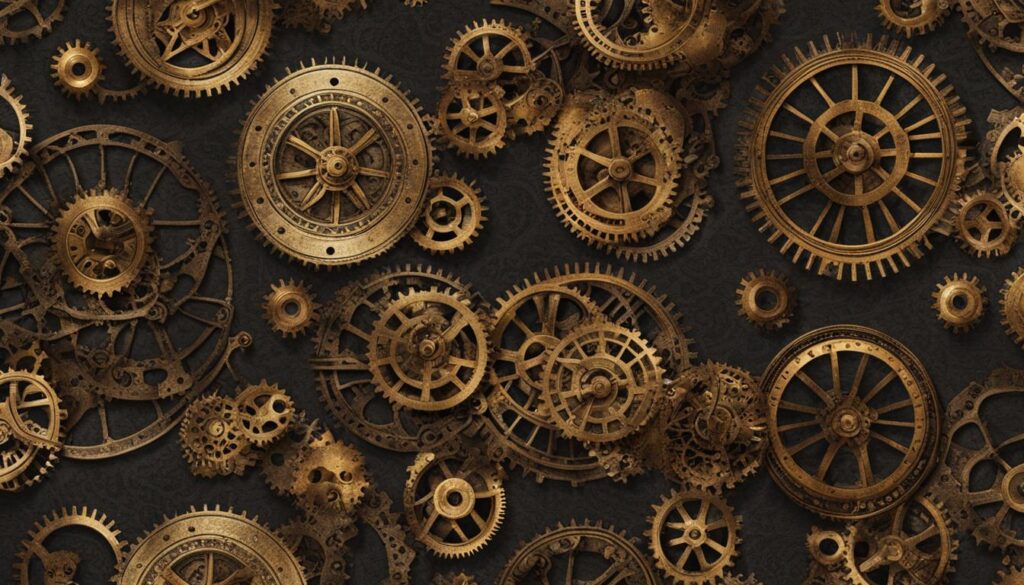
For those seeking even more adventure, steampunk-themed fabric prints are highly sought after. Airships, mechanical contraptions, and industrial elements adorn these prints, adding a touch of mystery and intrigue to any garment. Whether you’re looking to create a stunning jacket, a flowing skirt, or a captivating corset, exploring the world of steampunk fabric designs and textures will unlock a realm of endless possibilities.
Sewing and Crafting with Steampunk Fabrics
Steampunk fashion enthusiasts embrace the art of sewing and crafting to bring their unique visions to life. When working with steampunk fabrics, it’s crucial to consider factors such as weight, drape, and durability. These fabrics often come in intricate, Steampunk-themed prints that add depth and character to garments and accessories.
For those venturing into the realm of sewing, techniques such as topstitching, edge stitching, and flat-felled seams can elevate the overall look and longevity of steampunk creations. These methods ensure that the stitching is secure, enhancing the durability of the garment. When crafting with steampunk textiles, incorporating metal trims, gears, and industrial-inspired embellishments can add an authentic touch to the design. These details bring the essence of Steampunk to life, transforming ordinary pieces into extraordinary works of art.
Fabric Choice Considerations
When selecting fabrics for steampunk outfits, it’s important to strike a balance between aesthetic appeal and practicality. Fabrics like brocade, jacquard, and velvet are popular choices as they exude luxury and capture the essence of the Victorian era. Leather, on the other hand, offers a rugged and edgy appeal, making it ideal for creating unique and bold steampunk looks. For corsets, sturdy fabrics such as twill or coutil combined with steel-boning provide the much-needed structure and support.
To add a touch of femininity, tulle and lace can be incorporated into steampunk ensembles. These delicate fabrics offer softness and elegance, contrasting with the robust and industrial elements often found in steampunk attire. Ultimately, the chosen fabrics should not only contribute to the desired aesthetic but also withstand the movement and manipulation that is inherent in Steampunk fashion.
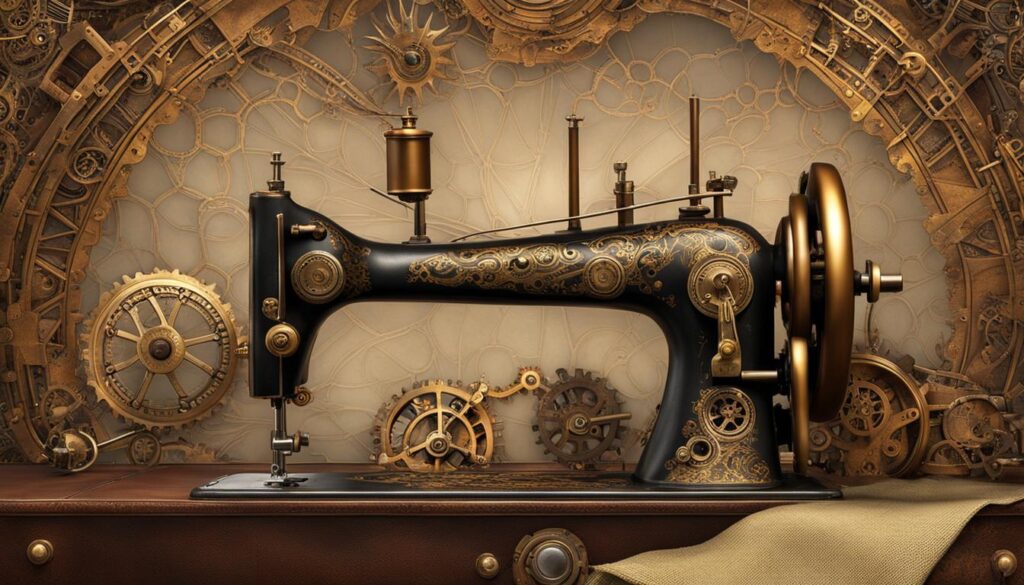
Steampunk Costume Fabric Guide
For aspiring steampunk fashion creators, a comprehensive fabric guide can be a valuable resource. This guide should include an array of fabric options with detailed descriptions of their properties and suitability to different steampunk garments and accessories. It should provide insights on fabric weight, drape, and texture to help creators make informed decisions.
Additionally, the costume fabric guide could offer tips and tricks for working with challenging fabrics like silk, velvet, and tulle. It’s important to address the potential difficulties associated with these materials, such as slipping, crawling, and static cling, and provide recommendations on techniques and alternative fastening methods to overcome them.
By equipping steampunk enthusiasts with the knowledge and guidance needed to select and work with the right fabrics, the costume fabric guide ensures that their creations truly encapsulate the spirit of steampunk fashion.
Selecting Fabrics for Steampunk Outfits
Steampunk fashion is not just about style; it’s a way of life. When it comes to creating your perfect steampunk outfit, selecting the right fabrics is crucial. The right fabric can make or break your look, so it’s important to choose wisely. From luxurious brocades to edgy leathers, there are plenty of options to suit your personal style and desired aesthetic. Here’s a guide to help you navigate the world of steampunk costume fabrics and make the right choices for your unique ensemble.
Popular Steampunk Fabrics
When selecting fabrics for your steampunk outfit, consider the specific look you want to achieve. Brocade fabrics with intricate designs and metallic threads are perfect for creating a luxurious Victorian-inspired look. Velvet, known for its softness and rich texture, adds depth and sophistication to any garment. Leather, with its durability and edgy appeal, is a staple in steampunk fashion. Pair it with metal accents and gears for an industrial aesthetic. Tulle and lace can be used to add a touch of femininity and elegance to your outfit, while still maintaining the steampunk vibe.
Considerations for Steampunk Fabrics
When selecting fabrics, it’s important to consider the practicality of your choices. Steampunk fashion often involves layers, accessories, and movement, so fabrics should be able to withstand these demands. Look for fabrics that are durable and can handle the wear and tear of everyday use. Additionally, consider the weight and drape of the fabric to ensure it complements the silhouette you want to create. With the right blend of fabrics, you can achieve a balance of style and functionality in your steampunk outfit.
| Fabric | Characteristics |
|---|---|
| Brocade | Intricate designs, metallic threads |
| Velvet | Soft, rich texture |
| Leather | Durable, edgy appeal |
| Tulle | Feminine, delicate |
| Lace | Elegant, intricate patterns |
“The right fabric can transport you to a different era. It can tell a story and make a statement. Steampunk fashion allows you to explore the realms of imagination and creativity. So, go ahead and select fabrics that not only look amazing but also make you feel like a true steampunk adventurer.”
Remember, steampunk fashion is all about pushing boundaries and expressing your unique style. Don’t be afraid to mix and match fabrics, experiment with different textures, and incorporate unconventional elements into your outfit. Steampunk is a genre where anything is possible, so let your imagination soar and create a truly remarkable steampunk ensemble.
Conclusion
Steampunk fashion is a realm of endless possibilities when it comes to fabric choices. Whether you’re sewing, crafting, or selecting fabrics for your steampunk outfits, embracing the adventurous spirit of the genre is key. Experimenting with unique fabric designs and textures gives you the opportunity to create one-of-a-kind steampunk attire that stands out from the crowd.
From the luxurious feel of silk and velvet to the edgy appeal of leather, each fabric presents its own challenges and opportunities. But don’t let that deter you. With the right combination of fabrics, patterns, and textures, you can truly bring your steampunk vision to life.
So go ahead and dare to adorn differently. Let your imagination run wild with crafting steampunk textiles and choosing patterns for your steampunk clothing. Whether you’re a seasoned steampunk fashion enthusiast or just starting out, the world of steampunk fashion is waiting to be explored. Unleash your creativity and make a statement in this captivating world of gears, cogs, and Victorian-inspired flair.
FAQ
What are the popular fabric choices in steampunk clothing?
Popular fabric choices in steampunk clothing include silk, velvet, tulle, and leather.
What challenges can be encountered when working with these fabrics?
Silk can be slippery, velvet tends to crawl, tulle causes static cling, and leather doesn’t take pins easily.
How can these challenges be overcome?
Fabric manipulation techniques and alternative fastening methods can be used to conquer these obstacles.
What patterns and textures are commonly used in steampunk fashion?
Gears, cogs, clockwork motifs, Victorian-inspired florals, brocade, lace, distressed leather, ruffled fabric, corsets, and pleats are popular in steampunk attire.
Can steampunk-themed fabric prints be utilized in creating steampunk outfits?
Yes, steampunk-themed fabric prints featuring airships, mechanical contraptions, and industrial elements are highly sought after.
What considerations should be made when working with steampunk fabrics for sewing and crafting?
The weight, drape, durability, and desired silhouette should be taken into account when selecting fabrics for steampunk outfits.
What are some recommended sewing techniques for steampunk garments?
Topstitching, edge stitching, and flat-felled seams can enhance the overall look and durability of steampunk garments.
How can steampunk textiles be incorporated into crafting projects?
Metal trims, gears, and industrial-inspired embellishments can be added to steampunk textiles for an authentic touch.
What fabrics are commonly used for corsets in steampunk fashion?
Sturdy fabrics like twill or coutil, with steel-boning for added structure and support, are often used for corsets.
How should fabrics be selected for practicality in steampunk outfits?
Fabrics should be able to withstand movement and manipulation, as steampunk fashion often incorporates layers and accessories.
What is the key to creating unique steampunk attire?
Embracing the adventurous spirit of steampunk fashion and experimenting with different fabric designs, patterns, and textures.

